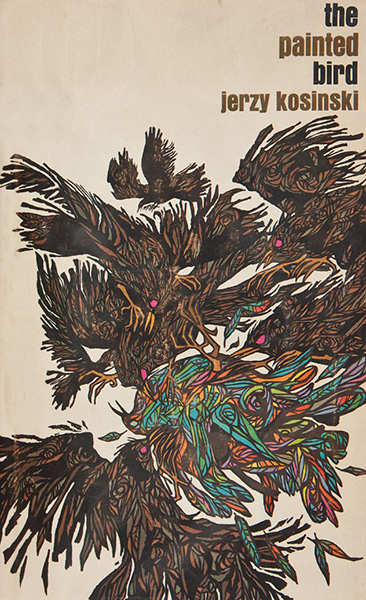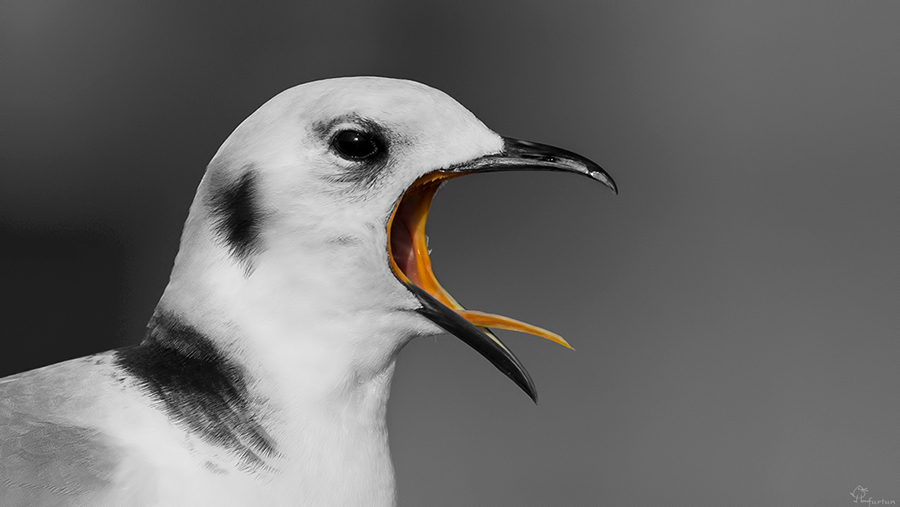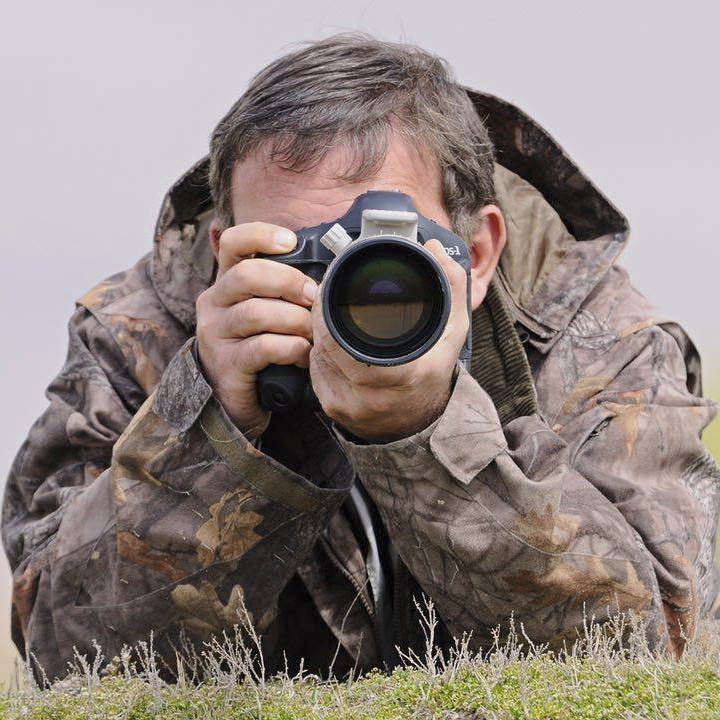The Painted Bird
Jerzy Kosinski’s novel The Painted Bird has faced harsh criticism since its publication in 1965 due to its violent passages, which are filled with examples of the depths of human cruelty and an exploration of the close relationship between horror and brutality.
The story follows a child sent to a remote village by his family during World War II for protection. When the elderly woman entrusted with his care dies, he is left to wander from village to village, sometimes taken in, sometimes stoned by locals. It is impossible not to be horrified while reading about his experiences.
Kosinski uses observations from nature and animal behavior to symbolize the savagery of people untouched by civilization and bound to superstition. Birds, in particular, appear frequently in his writing.
One day, the boy crosses paths with a bird catcher named Lekh. Lekh takes him in, using the boy’s small and light frame to help set up nets in places he himself cannot reach.
When the boy later recounts, “My master taught me that all humans should pay attention to birds and learn from their behavior,” it suggests that Lekh values nature and birds. However, his actual profession is catching birds and selling them to the villagers. The only family he has consists of the various birds he shares his forest cabin with—from sparrows to owls.
"As daylight began to illuminate the depths of the forest and the fields, we would gather the birds caught in the traps we had set the day before. Lekh would carefully free them from the snares, sometimes speaking sweetly, sometimes stroking them, and at times even threatening them with death. He would stuff the birds into the bag slung over his shoulder, where the poor creatures would cry and struggle until they were exhausted. Each new captive set off a wave of movement, making the bag jostle on Lekh’s back. The families and companions of the captives would circle above us, cursing. Lekh would lift his head and respond to them. If they lingered too long, he would drop the bag, load a stone into his slingshot, and send it flying at them. I never saw him miss. With every shot, a bird would fall, and without looking back, we would continue on our way."
If these passages alone are enough to infuriate a nature lover, the violence that Lekh inflicts when he longs for “Mad Ludmilla,” the wild woman of the forest, only adds to the horror.
"Sometimes days would pass without Ludmilla appearing. A deep, secret rage would gnaw at Lekh. He would fix his gaze on the birds and mutter to himself for hours. After long contemplation, sometimes for days, he would choose one of the most beautiful birds. He would tie it to his wrist, then mix strange ingredients to create a fragrant paint, preparing boxes of different colors. Then he would paint the bird’s head, wings, and neck in rainbow hues, giving its feathers the dazzling brightness of wildflowers.
We would walk deep into the forest together. Once we had gone far enough, Lekh would stop, untie the bird, hand it to me, and tell me to swing it by its feet. The painted bird would cry out, and its calls would draw a flock above us. The captive would struggle desperately, its heart pounding wildly inside its painted chest, eager to reach its kin.
When Lekh was satisfied with the number of birds circling overhead, he would signal for me to release it. The little rainbow against the clouds would rise, joyful and free, joining its noisy brethren. But as it tried in vain to convince them that it was one of their own, the others—confused by its bright colors—would inspect it with suspicion before attacking. They would peck at its painted feathers, tearing them out one by one. Featherless and covered in blood, the poor creature would fall from the sky. The scene repeated itself time and again, and we always found our victims dead. We would carefully spread their wounded bodies, their bright wings stained with blood, which mixed with the paint and smeared Lekh’s hands. But still, Ludmilla never came. Disappointed and brooding, Lekh would paint bird after bird, sending them to their merciless kin."
As you read, you can’t help but wonder: Will the dark-haired, black-eyed child—ostracized among the blond-haired, blue-eyed villagers—share the same fate as the "painted bird"? Each horrific event encountered on the pages compels you to flip to the end, desperate to know, What happens in the end? I can’t take it anymore!
Yet, Kosinski’s striking observations about birds kept me reading. Later, while going through reviews of the book, one comment stood out:
"(…) It is written as if it took place in 17th- or 18th-century Europe. For this reason, it’s not realistic. It’s an exaggerated book, recommended only for those who enjoy absurd depictions of violence."
Are there still places in the 21st century untouched by civilization? If someone were to write a similar novel today, could they fill its pages with as much brutality and cruelty as The Painted Bird, based on what they see, experience, and hear around them?
I thought about it—and realized, I could.
If I wrote about the men who proudly pose with their rifles beside a car hood covered in the corpses of birds, carefully arranged with no space left, would it be as disturbing as Lekh’s obsession while waiting for "Mad Ludmilla"?
If I wrote about the crows killed and impaled on stakes in the middle of fields as a warning to others, or the poisoned dogs, or the swans, storks, owls, foxes, and jackals shot for sport—would it be as grotesque as the painted crow being ripped apart by its own kind?
If I wrote about the politicians in the 21st century who claim to protect nature yet draft bills that pave the way for its destruction, opening national parks for development—would you shudder?
In the 21st century, does anyone even care about nature?
Or is everyone still waiting for Mad Ludmilla?





